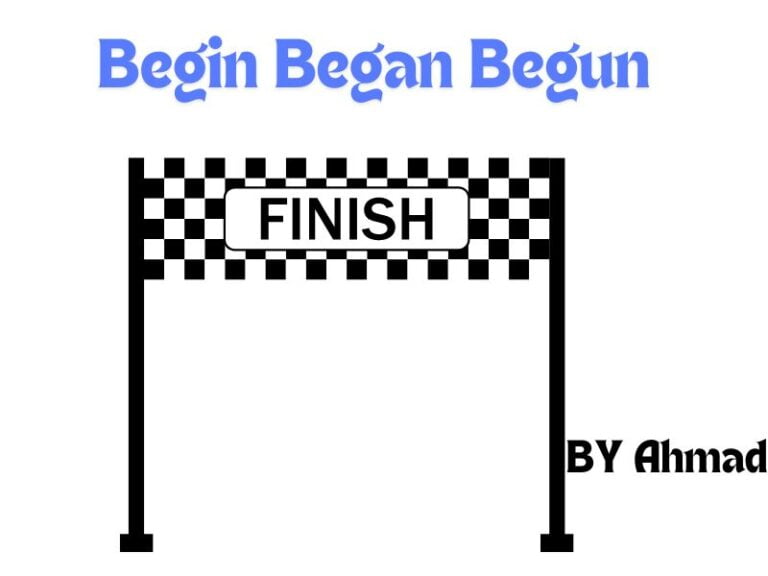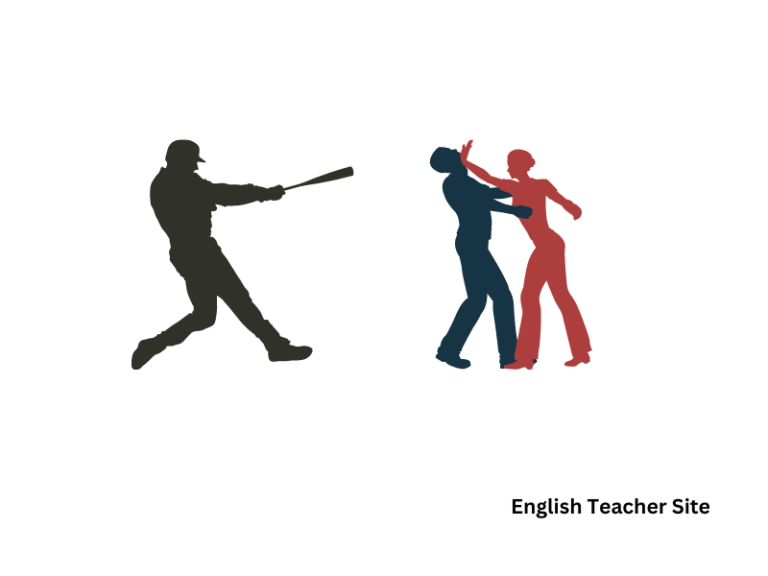Whats the Past Tense and Past Participle Form of Sit: A Guide to Verb Conjugation

- The past tense of “sit” is “sat,” which is used for actions completed in the past.
- “Sat” is also the past participle form, employed in various perfect tenses.
- Understanding the use of “sat” is essential for proper tense application in English.
The simple past tense form of “sit” is “sat.” This form is used to describe an action that has been completed at a definite point in the past. It remains the same irrespective of the subject. The past participle form is also “sat,” which might be used in perfect tenses. For instance, it is utilized in the present perfect tense as in “I have sat,” or in the past perfect tense as in “They had sat.” The distinction between the simple past and the past participle form might appear nuanced, but both serve their unique roles in conveying the timeframe and context of an action.
What’s the Past Tense and Past Participle Form of Sit
The past tense and past participle of “sit” have the same form, which can sometimes be a source of confusion for learners.
Exploring the past tense and past participle forms of the verb “sit.”
Past Tense of Sit:
- Simple Past: He/she/it sat.
- They/We/I/You sat.
Past Participle of Sit:
- They/We/I/You have sat.
- He/she/it has sat.
The verb “sit” is irregular, which means it does not follow the standard pattern of English verbs where you would add “-ed” to create the past tense or past participle. Both the simple past tense and the past participle of “sit” use the form “sat.” This form does not change whether it is being used as a simple past or as a past participle in perfect tenses.
What’s the Past Tense of Sit?
The past tense of the verb sit is sat. In English, the verb sit is classified as an irregular verb, which means that it does not follow a standard pattern of conjugation. The transformation from present to past tense does not involve simply adding -ed or -d to the end of the base form, as is common with regular verbs.
Examples of ‘sit’ in past tense:
- He sat at the desk.
- They sat in the park.
When using the past tense, the form sat remains the same regardless of the subject. This means that whether the subject is singular or plural (he, she, it, they), the past tense does not vary, which is typical of English past tense conjugation for both regular and irregular verbs.
In the context of sit, the past tense can be used to describe an action that was completed in the past. It simply indicates that someone rested their weight on their bottom sometime before now.
Forms of Sit
The English verb “sit” has several forms, which include the base form, the third person singular, the present participle, the simple past, and the past participle.
- Base Form: sit
- Third Person Singular Present Tense: sits
- Present Participle/Gerund: sitting
When discussing the simple past tense and past participle of “sit,” they share the same form:
- Simple Past Tense: sat
- Past Participle: sat
It’s important to note that “sit” is an irregular verb, implying that it does not follow the standard pattern of most verbs in English by adding “-ed” or “-d” to form its simple past tense and past participle. Instead, “sat” is used for both the simple past and the past participle, with no changes.
Here is an illustration of the verb “sit” in different tenses:
| Tense | Example |
|---|---|
| Simple Present | They sit by the window. |
| Present Continuous | She is sitting at her desk. |
| Simple Past | He sat beside her. |
| Past Perfect | We had sat there awaiting the storm’s end. |
The correct use of “sit” in its past forms is critical for proper English grammar. Whether one is sitting down to write, sat in contemplation yesterday, or has sat through a lengthy meeting, using “sat” as the simple past and past participle maintains linguistic accuracy.
Past Participle vs. Past Tense of Sit
Understanding the difference between the past tense and the past participle forms of the verb “sit” is crucial for correct English grammar. “Sit” is an irregular verb, meaning it does not follow the standard patterns of conjugation.
The past tense of “sit” is sat. This form is used to describe an action that was completed at a specific time in the past.
Example: Yesterday, she sat by the fireplace.
In contrast, the past participle form is also sat. However, it is primarily used in perfect tenses and often requires an auxiliary verb such as “has” or “had.”
Example: He has sat at that desk for years.
Below is a simple table that contrasts the two forms:
| Tense | Form |
|---|---|
| Past | sat |
| Past Participle | has/had sat |
To further understand the application of these forms, consider these sentences with “sat” in the past tense:
- They sat in silence for a while.
- She sat down to write the letter.
Sentences with “sat” as a past participle:
- She has sat on the committee for many years.
- They had sat together since the show began.
Examples of “Sit” in the Present Tense
When discussing the present tense of the verb “sit,” it is essential to consider the various forms it takes in everyday language. In the present simple tense, “sit” is typically used to describe habits, general truths, or scheduled events in the near future.
- Third-person singular: He, she, or it sits.
- Example: She sits at her desk every morning.
- Other forms: I sit, you sit, we sit, they sit.
- Example: They sit together at lunch.
Present continuous or present progressive form involves the present participle “sitting”:
- Singular and plural: He is sitting, they are sitting.
- Example: He is sitting by the fireplace.
The present perfect form combines “have” or “has” with the past participle “sat”:
- Singular: She has sat.
- Example: She has sat here before.
- Plural: They have sat.
- Example: They have sat in the same seats for years.
In present perfect continuous, “has” or “have” is followed by “been sitting”:
- Singular and plural: He has been sitting, they have been sitting.
- Example: He has been sitting there since morning.
Examples with “Sat” in the Past Tense
The simple past tense form of “sit” is “sat.” This form is used to describe actions that were completed in the past. Below are various sentences that illustrate how “sat” is implemented in different contexts.
- Simple Statement: She sat by the window reading her book.
- Negative Sentence: They never sat at the front of the classroom.
- Interrogative: Did he sit with you at the concert last night?
- Compound Sentence: The cat sat on the mat, and the dog lay beside it.
Using “sat” in a variety of sentence structures demonstrates its versatility in past tense narratives. Consider the following examples with additional details:
- Describing Duration: He sat in silence for hours contemplating his decision.
- Sequential Actions: She finished her meal, sat back in her chair, and sighed contentedly.
- Interactive Dialogue: “Where did you sit during the meeting?” she asked. “I sat at the end of the table,” he replied.
Idioms with Sit/Sat
When it comes to the verb “sit” and its past forms “sat” and “sitten” (archaic), English is rich with idiomatic expressions. Below are examples of idioms that use the verb “sit” in its past forms.
- Sit tight: This means to wait patiently and take no action until you hear otherwise. For example: “They sat tight until the weather improved.”
- Sat on their hands: Used to describe someone who is not taking action when they should. For example: “They sat on their hands instead of dealing with the issue.”
- Sitting pretty: This phrase describes a person who is in a good situation. For example: “After the promotion, she was sitting pretty.”
Additionally, here are some common idioms where “sit” is used in the present tense, which may also appear in their past tense forms in conversation:
- Sit well with: When something does not sit well with someone, it means they are uncomfortable or disagree with it.
- Sit on the fence: This describes someone who cannot or does not want to choose between two options.
- Sit out: Opting not to participate in something. After the verb, this idiom can be conjugated to “sat out” for past instances.
The Origin of Sit
The English verb “to sit” has its roots deeply entrenched in the Proto-Germanic *setjan, which holds the basic meaning of “to set” or “to place oneself down.” The term evolved from the Proto-Indo-European *sed-, signifying “to sit.” This etymological lineage is evident in several other Indo-European languages, such as Latin sedere, Greek hedra (seat), and Sanskrit sad.
Going further back, the Proto-Indo-European root provided a base for various cognates across different languages. Here is a brief representation:
| Language | Cognate | Meaning |
|---|---|---|
| Latin | sedere | to sit |
| Greek | hedra | seat, base |
| Sanskrit | sad | to sit |
In Old English, the term was sittan, which transformed over time into the Middle English sitten, retaining the same meaning. The current form “sit” came into use during the Late Middle English period.
Orthographically, the term has not varied extensively, signifying its function and action have been conceptually stable throughout English’s storied past. This stability is a testament to the fundamental nature of the action within human experience, making it a lexical staple across culture and time.
Source
- Definition of sit from the Collins English Dictionary
- Harper, Douglas. “Etymology of sit.” Online Etymology Dictionary, https://www.etymonline.com/word/sit
My name is Khamis Maiouf. I am the creator of the English Teacher Site, dedicated to providing valuable resources and insights for students around the world. With a passion for education and a commitment to helping students enhance their skills, I aim to make English teaching more effective and enjoyable for both educators and students.






